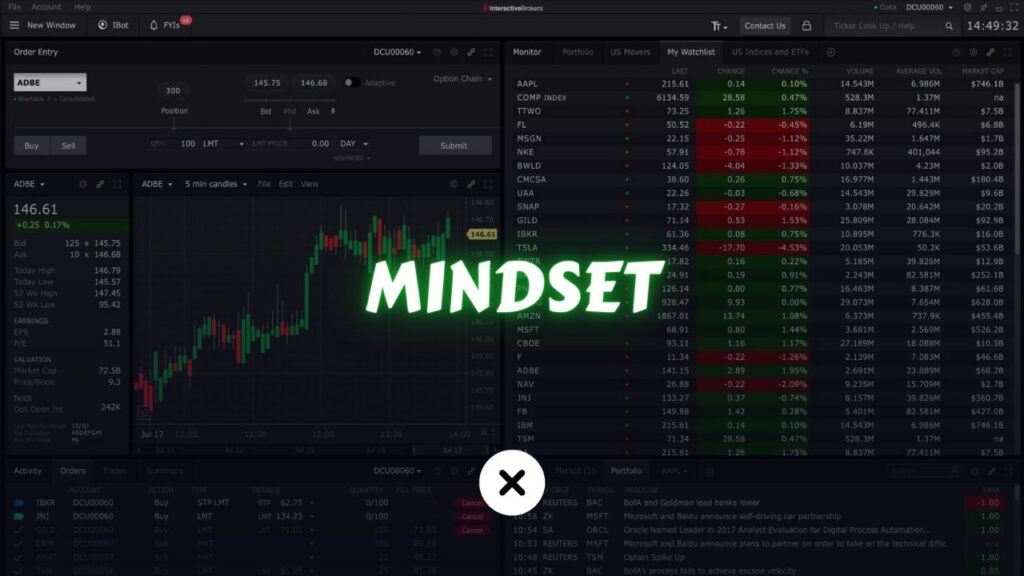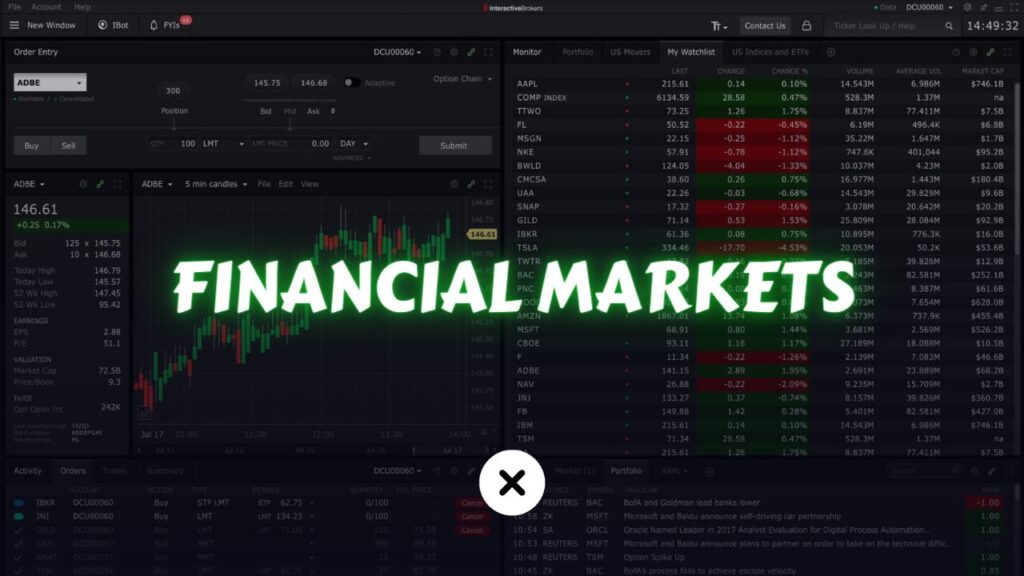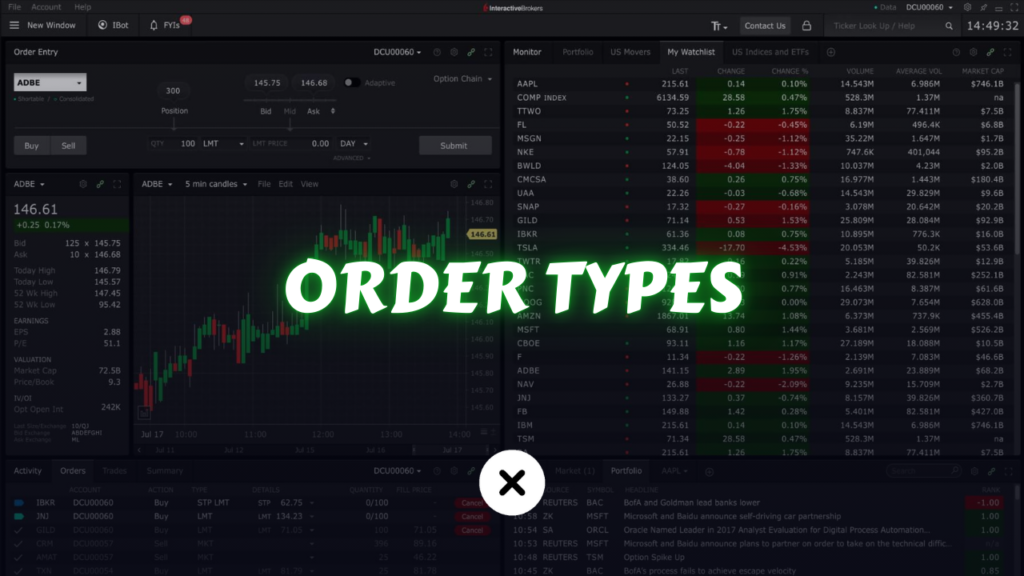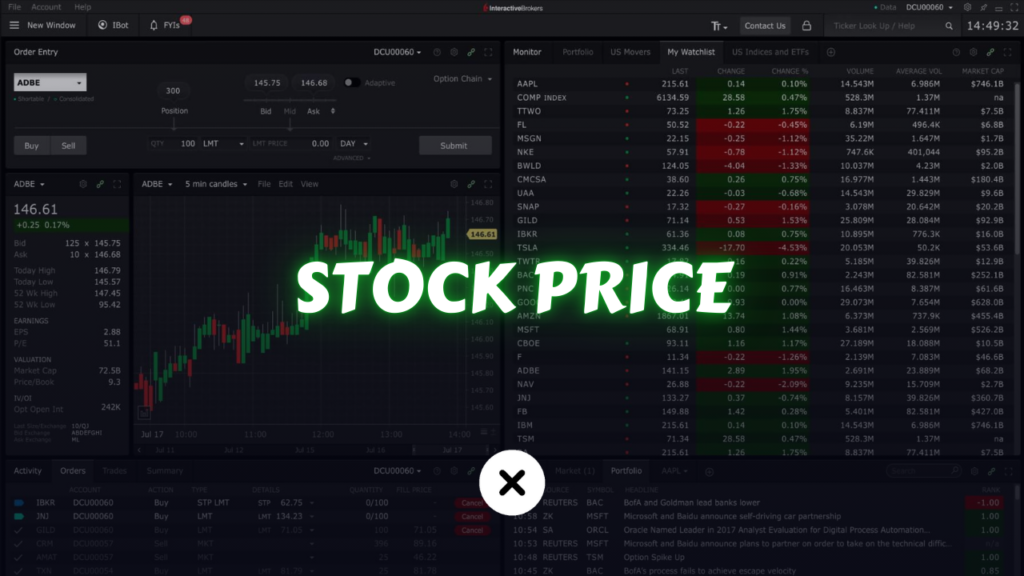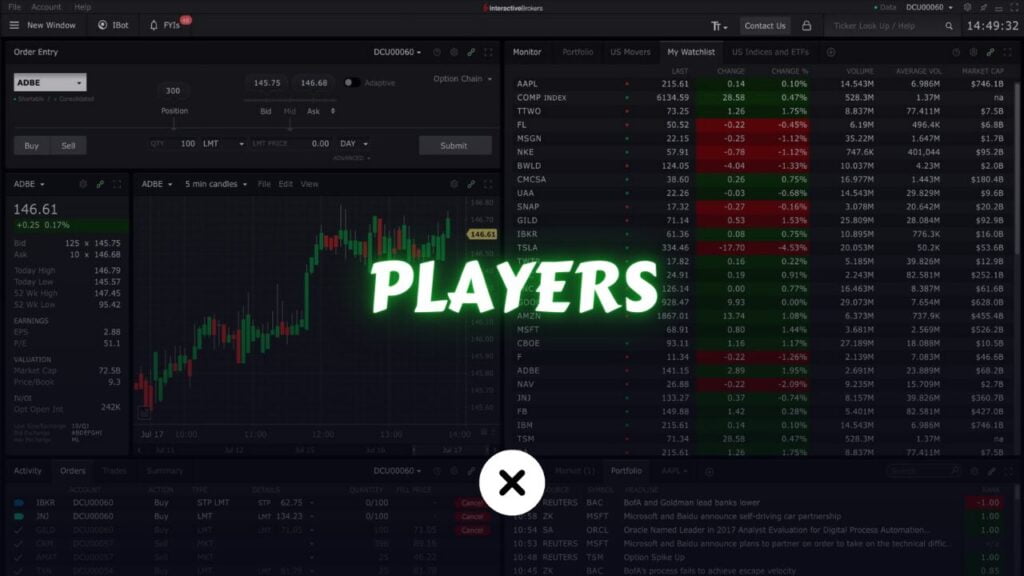Trading—whether in stocks, cryptocurrencies, foreign exchange (forex), commodities, or any other financial market—is much more than a matter of capital and timing. Contrary to popular belief, the secret ingredient that truly separates high-performing traders from everyone else is not only about who has the best trading system or the most robust technical indicators. Instead, it is about cultivating the right psychology, discipline, and resilience—also known as the mindset of a trader.
This in-depth guide will take you through the fundamental aspects of developing a winning trader’s mindset. We will break down the habits you need, explore the personality traits that align with trading success, and introduce you to proven strategies for consistency and profitability. Along the way, we’ll also analyze the various emotional challenges traders face and offer actionable techniques to conquer them. By understanding and internalizing this knowledge, you can build a strong psychological foundation for your trading career.
Table of Contents
Introduction to the Mindset of a Trader

Before delving into the specifics, let’s first define what we mean by the mindset of a trader. In simplest terms, a trader’s mindset is a collection of beliefs, attitudes, habits, and emotional control mechanisms that guide a trader’s decision-making processes. This mindset impacts how you perceive market opportunities, assess risk, cope with stress, and handle wins and losses.
- Beliefs: Your expectations about the market, such as whether it’s primarily efficient or if patterns often repeat themselves.
- Attitudes: How you react to change, uncertainty, and external influences.
- Habits: Repetitive behaviors—like consistent journaling or always using stop-loss orders—that become integral to your trading routine.
- Emotional Control Mechanisms: Techniques to handle fear, greed, and anxiety, enabling you to make objective decisions rather than emotionally driven ones.
Anyone can learn technical and fundamental analysis; information about chart patterns, indicators, or valuation methods is widely available. Yet, many traders still fail because they overlook the crucial psychological component. The moment real money is at stake, emotional volatility can overshadow even the best analysis. Therefore, focusing on building a robust mindset is essential for achieving consistent profitability.
Why a Strong Mindset Matters in Trading

Trading is an inherently uncertain and sometimes stressful activity. No matter how precise your strategies may be, the markets can (and will) surprise you. Your ability to navigate these surprises without losing composure or deviating from your plan is central to success. Here’s why a strong mindset is vital:
- Emotional Regulation: Emotions such as fear and greed often lead to impulsive decisions, like entering trades too late or exiting too early. A stable mindset helps you remain cool, rational, and consistent.
- Consistency in Execution: Markets are dynamic, but consistency in your approach creates a stable framework for decision-making. A well-disciplined mind can enforce the rules you’ve set for yourself, like only trading when your technical and fundamental criteria are met.
- Risk Management: Traders without a solid mindset might hesitate to cut losses quickly, hoping for a turnaround. Conversely, they might exit winning trades prematurely out of fear. Robust mental discipline ensures you maintain healthy risk-reward ratios.
- Adaptability: A strong mindset includes self-awareness and the willingness to adapt. If the market environment changes—such as a shift in volatility or trends—an emotionally intelligent trader can tweak their strategies accordingly.
- Long-Term Sustainability: Trading is not a sprint; it’s a marathon. Surviving market cycles and volatile conditions requires both psychological and financial endurance. A stable mindset allows you to remain in the game, improving and growing over time.
Ultimately, a trader’s mindset functions as a lens through which you interpret market data. If that lens is clouded by fear, greed, or self-doubt, your decisions become reactionary and prone to error. If it’s polished by discipline, knowledge, and self-awareness, you’ll be able to see opportunities more clearly and act decisively.
Core Habits of Successful Traders

When we talk about the mindset of a trader, we’re usually referring to a blend of thought patterns and behaviors that culminate in effective decision-making. Below are core habits that most successful traders adopt:
1. Maintaining a Trading Journal
Why It’s Important
A trading journal is one of the most powerful tools in a trader’s arsenal. Recording each trade—along with the rationale behind it, the outcome, and your emotional state—provides invaluable feedback loops. Over time, you can spot patterns of both success and failure that lead to meaningful insights and continuous improvement.
How to Implement
- Details to Include: Date, time, entry and exit points, reasons for trade, emotional factors, and final result.
- Regular Reviews: Commit to reviewing your journal at least once a week. Look for recurring mistakes or particularly profitable setups.
- Objective Assessment: Treat your journal like a scientist would treat data; remove personal biases and look at the facts.
2. Setting Clear Goals and Plans
Why It’s Important
Having well-defined goals—such as specific profit targets, acceptable drawdown levels, or a consistent monthly return—keeps you focused and helps you evaluate progress objectively.
How to Implement
- Short-Term vs. Long-Term Goals: Have daily or weekly targets (e.g., limiting the number of trades or amount risked) and overarching goals (e.g., achieving a specific annual return).
- Action Plan: Outline the steps needed to achieve these goals, from the research process to trade execution.
- Measurement and Adjustment: Periodically compare your results against your goals. If you’re consistently missing targets, adjust your plan or objectives.
3. Consistent Risk Management
Why It’s Important
Minimizing losses and protecting capital is paramount. Even a trader with a modest win rate can be profitable if they consistently cut losses early and let winners run.
How to Implement
- Position Sizing: Use a percentage-based rule (e.g., risk 1–2% of your total capital per trade).
- Stop-Loss Orders: Always have an exit plan. If your setup fails, stick to your stop-loss order to preserve your capital.
- Risk-Reward Ratios: Aim for at least a 1:2 or 1:3 risk-reward ratio on each trade to ensure that profitable trades outweigh losses.
4. Patience and Discipline
Why It’s Important
Markets can be unpredictable. Rushing into trades or deviating from your strategy because you’re bored or feel an urge to “make something happen” is a fast track to losses. Patience and discipline keep you aligned with your plan and free from impulsive decisions.
How to Implement
- Wait for High-Probability Setups: Only take trades that meet all your predefined criteria.
- Resist Over-Trading: Set a limit on how many trades you’ll take in a day or week, focusing on quality over quantity.
- Stay Objective: Follow your trading signals rather than hunches or emotional impulses.
5. Continual Learning and Adaptation
Why It’s Important
Financial markets are constantly evolving due to technological innovations, shifting regulatory environments, and global events. Traders must remain lifelong students of the market.
How to Implement
- Stay Informed: Keep up with market news, economic indicators, and relevant geopolitical events.
- Expand Your Skill Set: Learn new forms of analysis (e.g., fundamental, technical, sentiment), or delve deeper into advanced concepts like options strategies or blockchain technology for crypto.
- Seek Mentorship or Community: Join trading forums or mentorship programs to exchange ideas and feedback.
Personality Traits That Excel in Trading

While anyone can succeed in trading with enough effort and discipline, certain personalities have a natural edge. It’s crucial to understand your tendencies so you can leverage strengths and mitigate weaknesses.
1. The Analytical Thinker
Characteristics: Methodical, detail-oriented, and data-driven.
- Strengths: Likely to excel in technical or fundamental analysis; systematic approach reduces impulsive errors.
- Weaknesses: May suffer from “analysis paralysis” overthinking trades and missing opportunities.
2. The Calculated Risk-Taker
Characteristics: Comfortable with uncertainty and enjoys making decisions under pressure.
- Strengths: Quick to act on opportunities and adapt to changing conditions.
- Weaknesses: Might take on undue risk if not tempered by solid risk management rules.
3. The Patient Strategist
Characteristics: Prefers to wait for the ideal scenario, disciplined, and consistent.
- Strengths: Minimizes emotional mistakes, less prone to over-trading.
- Weaknesses: Can miss fast-moving opportunities or be too rigid in changing market conditions.
4. The Persistent Optimist
Characteristics: Positive, resilient, and able to bounce back from losses quickly.
- Strengths: Maintains morale and motivation, encourages innovative problem-solving.
- Weaknesses: Risks ignoring valuable warning signs or not learning lessons from errors.
5. The Intuitive Observer
Characteristics: Relies heavily on pattern recognition and intuition, often built upon extensive experience.
- Strengths: Highly adaptable, can spot subtle shifts in market sentiment.
- Weaknesses: Overconfidence in intuition can lead to reckless trades if not combined with objective data.
No single personality type guarantees success, but awareness of your own style and inherent biases enables you to refine your approach. Successful trading often involves blending the best attributes from these different styles.
Strategies to Cultivate a Winning Trader’s Mindset

Building a strong mindset is a marathon rather than a sprint. Below are multiple strategies you can integrate into your daily routine to strengthen your discipline, emotional control, and overall performance.
Mindfulness and Meditation
How It Helps
Mindfulness techniques, including meditation and breathwork exercises, can significantly reduce stress and increase self-awareness. By practicing mindfulness, you improve your ability to stay present in the moment and make data-driven decisions rather than emotionally charged ones.
Practical Application
- Daily Practice: Even 10 minutes of meditation each morning can set a calm tone for the rest of your trading day.
- In-Trade Application: If you feel anxiety building during a trade, pause and focus on your breath for 30 seconds. This short mindfulness break can reset your emotional state.
Mental Rehearsals and Visualization
How It Helps
Visualization helps wire your brain for success by mentally practicing how you’ll react to specific market scenarios. You effectively create a “pre-programmed” response to triggers such as sudden volatility or unexpected news.
Practical Application
- Visualize Routine Trades: Imagine executing your ideal trade setups flawlessly, following every rule.
- Visualize Worst-Case Scenarios: Picture how you’ll respond if a trade moves sharply against you. This can reduce panic when it actually happens.
Reward Systems and Accountability
How It Helps
Rewarding yourself for following your rules—even if a trade is a loss—encourages consistent adherence to your plan. Having an accountability partner (or group) adds another layer of discipline.
Practical Application
- Positive Reinforcement: Treat yourself (e.g., with a small gift or a break) after following your rules consistently for a set period.
- Accountability Partners: Share your trading plan and results with someone you trust. Schedule weekly check-ins to discuss progress and challenges.
Cognitive Behavioral Techniques
How It Helps
Cognitive Behavioral Therapy (CBT) techniques can help you recognize and adjust negative thought patterns that lead to self-sabotage, such as excessive fear of losing or impulsive revenge-trading after a loss.
Practical Application
- Self-Talk Awareness: Monitor your internal dialogue. Replace self-defeating statements like “I always lose” with constructive ones like “Losses are part of trading; I’ll learn from this.”
- Thought Records: Write down your fears or anxieties, examine the evidence for and against them, and create a balanced perspective.
Training Under Realistic Conditions
How It Helps
Practice trading in a demo or simulated environment can be beneficial, but real money on the line triggers different emotional responses. Gradually moving from a demo account to a small live account lets you build emotional resilience without risking large sums.
Practical Application
- Phase-Based Approach: Start with a demo account, then move to a small capital account, and finally scale up.
- Limit Emotional Damage: If you lose a certain amount, step away and reassess your strategy rather than continuously trading out of frustration.
Emotional Challenges and How to Overcome Them

Emotions like fear, greed, anger, and overconfidence can wreak havoc on your trading decisions. Recognizing these emotional pitfalls is the first step to neutralizing their effects.
1. Fear of Losing
What It Is
Fear of losing is normal but can become crippling when it prevents you from taking valid trades or causes you to exit too early.
How to Overcome
- Accept Losses as Part of the Process: No trader wins every trade. Losses provide valuable lessons.
- Trade With a Plan: Having a well-defined entry, exit, and stop-loss helps reduce anxiety.
- Gradual Exposure: Start with smaller positions to desensitize yourself to the emotional impact of losses.
2. Greed and Overconfidence
What It Is
Greed often shows up as overtrading, increasing position sizes too quickly, or holding on to a winning position for too long in the hope of even more profits.
How to Overcome
- Set Profit Targets: Define take-profit points in advance.
- Respect Position Sizing: Even in a winning streak, stick to your risk management rules.
- Stay Grounded: Continually remind yourself that market conditions can change rapidly.
3. Revenge Trading
What It Is
Revenge trading occurs when a trader, upset by a recent loss, attempts to “win back” the money quickly by entering hasty, impulsive trades without proper analysis.
How to Overcome
- Cool-Down Period: Implement a rule that you must wait a certain amount of time—or until the next trading session—before taking another position after a big loss.
- Focus on Process, Not Outcome: Shift your goal from recouping the loss immediately to making quality, rule-based trades.
4. Anxiety and Self-Doubt
What It Is
Constant second-guessing can lead to missed opportunities or micro-managing trades.
How to Overcome
- Improve Your Trading Plan: A robust plan offers clarity and reduces ambiguity.
- Positive Self-Talk: Reinforce your competence by acknowledging your analysis and prior successes.
- Seek Support: Engage with a trading community or mentor for reassurance and different perspectives.
Building Resilience and Discipline

Trading success is the culmination of consistent, disciplined actions taken over time. Resilience is the capacity to recover quickly from difficulties—an ability that’s crucial when the market hands you unexpected setbacks.
1. Developing Mental Toughness
Key Elements
- Grit: Perseverance in the face of challenges.
- Flexibility: Willingness to adjust your trading strategies when markets change.
- Focus: Ability to maintain concentration on your trading plan without yielding to distractions.
How to Practice
- Stress Inoculation: Gradually expose yourself to controlled risk, like starting with a smaller trading account and scaling up.
- Reflective Journaling: Document how you handle losses or stressful scenarios, and plan how you’ll respond in the future.
2. Consistent Routines and Rituals
Why It’s Important
A well-structured routine stabilizes your trading mindset by reducing the emotional volatility of random decision-making.
Potential Routine
- Morning Preparation: Review economic news, update your watch list, and confirm key support/resistance levels.
- Pre-Trade Checklist: Confirm that the trade meets all criteria (risk-reward ratio, technical setup, etc.).
- Post-Trade Review: Record results in your journal and note any emotional triggers experienced.
3. Knowing When to Take a Break
Why It’s Important
Burnout leads to careless mistakes. Regular breaks and days off are essential to recharge mentally and emotionally.
How to Implement
- Scheduled Downtime: Dedicate at least one day a week where you don’t monitor markets.
- Vacation from Screens: Periodically take extended breaks (e.g., a week off) to reset your perspective.
Risk Management as a Mindset

A critical element of the mindset of a trader is understanding that protecting capital is more important than short-term profit maximization. Risk management is not just a rule-based system but a way of thinking.
The Risk-Reward Equation
Why It Matters
Every trade has an inherent ratio between how much you risk (your potential loss) and how much you stand to gain (your potential profit). A healthy risk-reward ratio ensures that you only need a moderate win rate to be profitable.
Practical Tips
- Minimum Ratios: Target trades with at least a 1:2 or 1:3 risk-reward ratio.
- Factor in Fees and Slippage: Remember to include transaction costs, spreads, and potential slippage.
Diversification and Position Sizing
Why It Matters
Concentrating too much capital into a single trade or asset class can lead to catastrophic losses. Allocating your capital wisely across different instruments or markets can help you weather unpredictable market conditions.
Practical Tips
- Position Sizing Formula: Determine how much to risk per trade (e.g., 1–2% of total capital).
- Correlations: When diversifying, choose assets that don’t move in tandem to truly reduce risk.
Emotional Benefits of Solid Risk Management
- Reduced Anxiety: Knowing you have capped risk on each trade lessens emotional strain.
- Greater Focus: Instead of worrying about a potential catastrophic loss, you can focus on strategic execution.
- Long-Term Viability: Traders who prioritize risk management are more likely to stay in the game and refine their skills over time.
Developing a Long-Term Perspective

Short-term gains can be exhilarating, but experienced traders recognize that success in the markets often requires building a sustainable approach.
Compound Growth Mindset
What It Is
A compound growth mindset emphasizes steady, incremental gains that build on each other. By consistently aiming for realistic monthly returns rather than home-run trades, your account can grow exponentially over time.
Practical Steps
- Reinvest Profits: Gradually increase your position sizes as your capital grows, still adhering to a strict risk percentage.
- Focus on Weekly/Monthly Goals: Instead of daily PnL swings, measure your performance over longer intervals.
Balancing Life and Trading
Why It Matters
A holistic perspective helps keep stress at manageable levels. Moreover, traders who balance their mental and physical well-being usually perform better than those who are constantly glued to their screens.
How to Implement
- Health and Fitness: Regular exercise and a balanced diet can improve your cognitive function and emotional stability.
- Relationships and Hobbies: Engaging with friends, family, and personal interests helps you return to trading with a fresh mindset.
- Scheduled Retreats: Periodically step away to gain perspective; this reduces emotional fatigue and fosters creative thinking.
Adapting to Market Phases
What It Is
Markets aren’t static; they go through bull, bear, and sideways phases. A long-term perspective involves recognizing these shifts and adjusting your strategies.
Practical Example
- Bull Markets: A breakout strategy might work excellently, but you must still manage risk in case of a sudden reversal.
- Bear Markets: Short-selling or hedging strategies become essential, but overconfidence can be punished quickly.
- Range-Bound Markets: Focus on mean-reversion or swing trades, and avoid over-trading when volatility is low.
Practical Examples and Case Studies
Example 1: The Overzealous New Trader
Scenario
A new trader, excited by a few wins, decides to double their position size, ignoring the usual risk management rules. The market moves against them, wiping out two weeks of gains in one day.
Lesson
- Maintain Discipline: Resist the temptation to raise your risk level prematurely.
- Use a Trading Journal: The trading journal would clearly show this emotional decision was inconsistent with past profitable habits.
Example 2: The Patient Swing Trader
Scenario
This trader spends hours analyzing charts and waits for a particular pattern—a high-reward setup that appears only a few times a month. Their patience is rewarded with a consistent win rate and manageable drawdowns.
Lesson
- Quality Over Quantity: Waiting for high-probability trades can yield more consistent profits.
- Mindset of Confidence: Trust in your well-researched strategies alleviates the urge to trade every minor fluctuation.
Example 3: Adaptive Strategy Shift
Scenario
A forex day trader notices increased market volatility due to geopolitical tensions. Rather than sticking to short-term scalping, they pivot to a slightly longer time frame, allowing them to ride larger moves with tighter risk control.
Lesson
- Adaptability: Being open to adjusting your approach based on market conditions is a hallmark of the mindset of a trader.
- Risk Management: Even in the face of new opportunities, maintaining tight stops and disciplined position sizing remains critical.
Conclusion
The Mindset of a Trader: Key Habits, Personalities, and Strategies for Success underscores the reality that successful trading hinges less on having a perfect trading system and more on developing psychological fortitude, discipline, and self-awareness. By focusing on creating productive habits—like journaling, risk management, and continuous learning—you cultivate a state of mind that is calm, calculated, and consistent. Understanding your personality type can guide you in leveraging your strengths and shoring up weaknesses, while employing practical strategies such as mindfulness, visualization, and cognitive techniques helps you maintain emotional equilibrium.
Moreover, the path toward long-term success relies on resilience, adaptability, and the ability to learn from both winning and losing trades. When you adopt a mindset that emphasizes risk control, discipline, and consistent execution, you create a foundation that weather-proofs you against the inevitable ups and downs of the market. By integrating these principles into your trading routine, you’ll not only improve your performance but also find greater satisfaction and longevity in your trading journey.
In essence, the mindset of a trader is a dynamic blend of beliefs, attitudes, and behaviors that revolve around a central tenet: sustainable profitability requires psychological strength as much as (or more than) any technical or fundamental edge. With the right mindset, you transform challenges into opportunities for growth, ultimately setting the stage for lasting success in the ever-evolving world of trading.
FAQs: The Mindset of a Trader
1. What is the mindset of a successful trader?
The mindset of a successful trader involves discipline, emotional control, adaptability, and a focus on long-term goals. It’s about sticking to your strategy, managing risk effectively, and learning from both successes and failures.
2. How can I build resilience and discipline in trading?
Resilience and discipline are built through consistent habits, such as maintaining a trading journal, setting clear goals, and practicing mindfulness to stay focused. Regularly reviewing your performance and sticking to your plan also help develop these traits.
3. Why is risk management important in trading?
Risk management protects your capital and ensures you can trade another day. By setting stop-losses, diversifying your portfolio, and only risking a small percentage of your capital per trade, you reduce the chances of significant losses.
4. What role does emotional control play in trading?
Emotional control helps traders avoid impulsive decisions driven by fear, greed, or frustration. It allows for clear, rational decision-making and adherence to a pre-defined strategy, even during market volatility.
5. How can I cultivate a long-term perspective in trading?
Developing a long-term perspective involves focusing on consistent, incremental growth rather than short-term gains. This includes setting realistic goals, understanding market cycles, and maintaining patience to achieve sustainable success over time.
